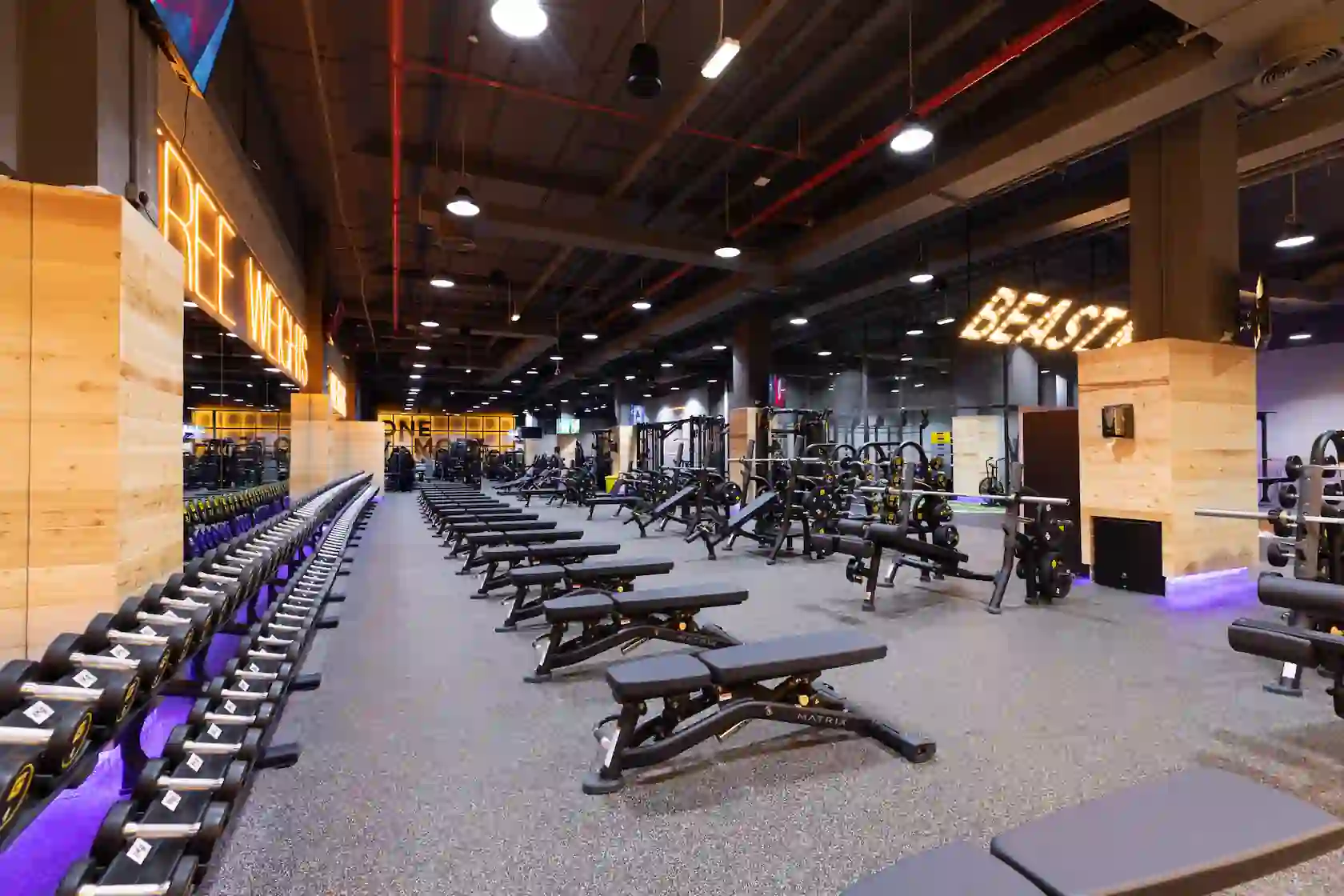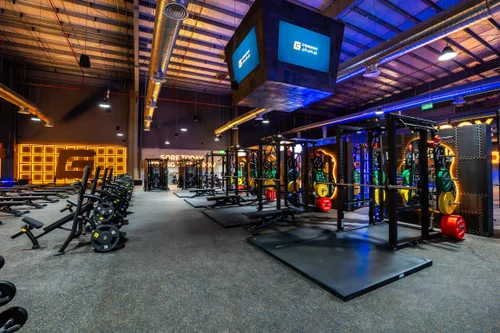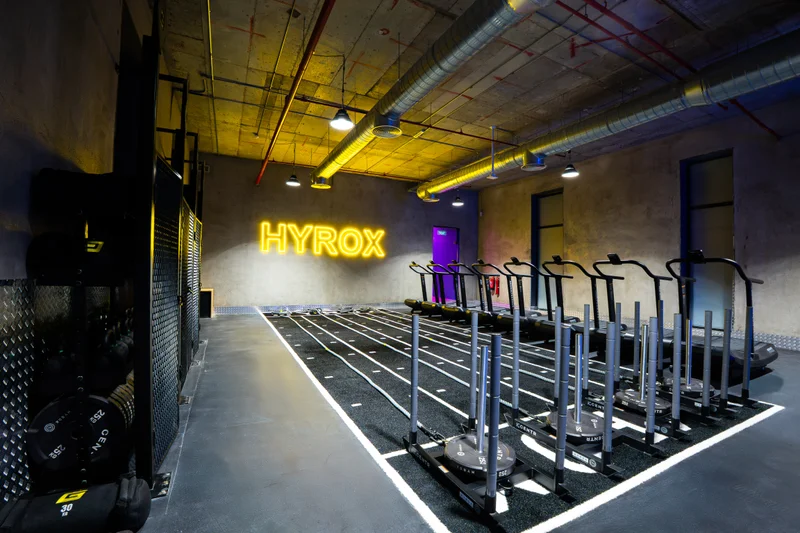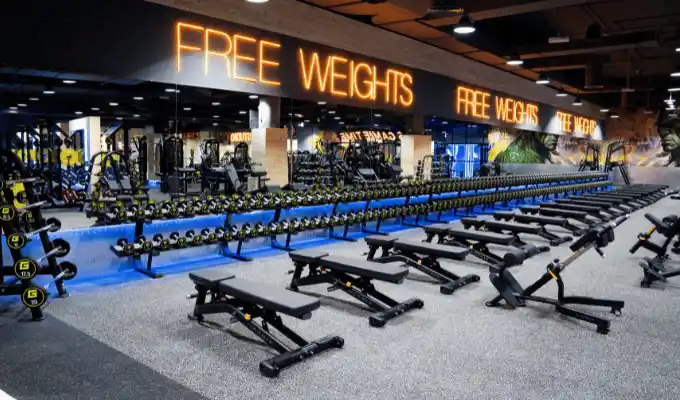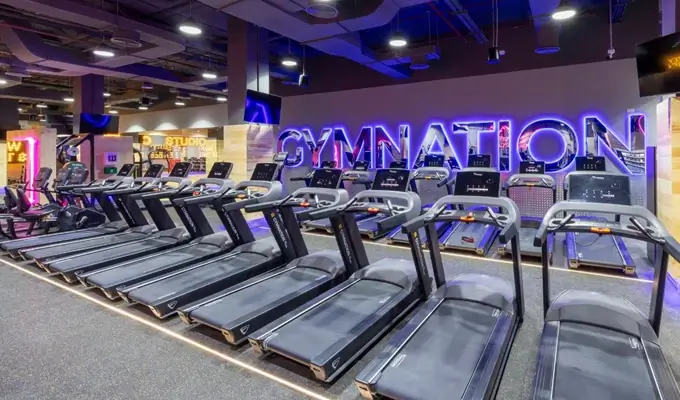What is Max Heart Rate And Why Does It Matter?
Max Heart Rate (MHR) is the maximum number of heart beats your heart can safely handle per minute during intense exercise. It’s a key metric in understanding your body’s limits and building a training plan that works with your heart, not against it.
Why You Need to Know Your Maximum Heart Rate (MHR):
Train smarter: Use it to create heart rate zones that guide your workouts.
Boost performance: Stay in the ideal zone to build endurance, strength, or burn fat. Staying in the ideal zone can also help you lose weight effectively by optimizing the intensity and duration of your workouts.
Avoid overtraining: Knowing your MHR helps you train safely and avoid pushing too hard.
Track real progress: As fitness improves, you’ll recover faster from high heart rate peaks.
SIGN UP FOR YOUR FREE DAY PASS TODAY!
How to Calculate your Max Heart Rate
The classic formula is:
220 - Your Age = Max Heart Rate (BPM)
For example, if you’re 22: 220 – 22 = 198 BPM
You can then train at percentages of that number (like 70%, 80%, etc.) based on your fitness goals.
What is Your Target Heart Rate (THR)?
Target Heart Rate (THR) is the range your heart should beat during exercise to ensure you’re training at the right intensity for your fitness goals, and understanding your target training zone is crucial for this.
This calculator automatically estimates your THR zones to help you optimize fat burning, endurance, or peak performance.
How It Works
The Karvonen Formula is commonly used to calculate your Target Heart Rate Range using your:
-
Maximum Heart Rate (HRmax)
-
Resting Heart Rate (HRrest)
-
Desired Training Intensity (%)
While the Karvonen Formula provides a good estimate, other factors such as your fitness level, physical activity routines, and overall health should also be considered.
Formula:
Heart Rate Reserve (HRR) = HRmax – HRrest
Then: Target HR = HRrest + (Intensity% × HRR)
Max Heart Rate Calculator
Your Max Heart Rate: ?
How to Use the GymNation Max Heart Rate Calculator
Want to train smarter, not just harder? Factors like body weight can also influence heart rate calculations. Use our calculator to find your Max Heart Rate (MHR) and tailor your workouts to hit the right target range.
Step-by-Step:
-
Enter your age in the box.
-
Click "Calculate".
-
Your Max Heart Rate (BPM) will be displayed instantly.
-
See a breakdown of heart rate zones (from 50% to 95%) to match your training goals.
What Do the Zones Mean for Exercise Intensity?
-
50–60% = Warm-up / Recovery
-
60–70% = Fat burn zone (great for steady cardio)
-
70–85% = Endurance & aerobic performance
-
85–95% = High intensity / peak performance, ideal for interval training
Why It Matters:
Training in the right heart rate zone helps you:
-
Burn fat efficiently
-
Improve stamina
-
Avoid overtraining
-
Track real progress
Measuring Heart Rate
Measuring heart rate is a crucial aspect of monitoring physical activity and exercise intensity. There are several ways to measure heart rate, each with its own advantages.
A manual pulse check involves placing two fingers on your wrist or neck to feel the pulse and counting the beats per minute. This method is simple and requires no equipment, but it can be less accurate during intense exercise.
Wearable activity trackers and heart rate monitors offer a more convenient and precise way to measure heart rate. These devices use sensors to detect your heart rate in real-time, providing continuous feedback during your workouts.
By regularly measuring your heart rate, especially during exercise, you can ensure that you’re within your target heart rate zone, optimizing your training intensity and achieving your fitness goals.
Exercise Intensity and Heart Rate
Exercise intensity is closely related to heart rate. As you ramp up the intensity of your workout, your heart rate increases correspondingly. Monitoring your heart rate during exercise is a reliable way to gauge how hard you’re working and ensure you stay within your target zone. The American Heart Association provides guidelines for heart rate targets based on exercise intensity:
-
Low-intensity exercise: 50-60% of MHR
-
Moderate-intensity exercise: 60-70% of MHR
-
High-intensity exercise: 70-85% of MHR
Staying within these target zones helps you maximize the benefits of your workouts, whether you’re focusing on fat burning, cardiovascular health, or peak performance.
Interval Training
Interval training is a powerful exercise method that involves alternating between short bursts of high-intensity activity and periods of rest or low-intensity activity. This type of training is highly effective for improving cardiovascular fitness, increasing speed and endurance, and burning calories.
To incorporate interval training into your workout routine, start with a 5-10 minute warm-up of light cardio to prepare your body. Then, engage in 20-30 minutes of interval training. For example, you can alternate between 30 seconds of high-intensity running and 30 seconds of walking.
This approach not only boosts your cardiovascular health but also keeps your workouts dynamic and engaging. Finish with a 5-10 minute cool-down and stretching session to prevent injury and aid recovery.
Heart Rate Training
Heart rate training is a method that involves monitoring your heart rate to optimize exercise intensity. This approach is effective for improving cardiovascular fitness, increasing endurance, and burning calories. To start heart rate training, you’ll need to determine your maximum heart rate and target heart rate zone.
Using a heart rate monitor or wearable activity tracker, you can track your heart rate during exercise and ensure you stay within your target heart rate zone, typically 50-85% of your maximum heart rate.
By doing so, you can tailor your workouts to your specific fitness goals, whether it’s building endurance, burning fat, or enhancing overall cardiovascular health.
Medications and Max Heart Rate
Certain medications, such as beta blockers, can significantly affect your maximum heart rate. Beta blockers work by reducing the heart rate, which can lower your MHR. If you’re taking beta blockers or other medications that influence heart rate, it’s crucial to consult with your healthcare professional to determine your target heart rate zone.
They can help you adjust your medication dosage or recommend alternative exercises that are safe and effective for you. This ensures that you can still achieve your fitness goals without compromising your health.
Resting Heart Rate
Resting heart rate (RHR) is the number of heartbeats per minute when you’re at rest. A normal RHR ranges from 60 to 100 beats per minute. Various factors, including stress, anxiety, hormones, medication, and physical activity level, can impact your RHR. Generally, a lower RHR is associated with better heart health and higher physical fitness.
Monitoring your RHR can provide valuable insights into your overall health and fitness level. By keeping track of your RHR, you can detect changes that might indicate improvements in your fitness or potential health issues that need attention.
Healthy Heart Rates
A healthy heart rate varies depending on age, fitness level, and other factors. Generally, a resting heart rate of 60-100 beats per minute is considered normal for adults. However, athletes and individuals who are highly fit may have a lower resting heart rate, often below 60 beats per minute, indicating more efficient heart function and better cardiovascular fitness.
Monitoring your heart rate regularly is essential to ensure you’re within a healthy range. Factors such as stress, anxiety, hormones, medication, and physical activity level can impact your heart rate.
If you have concerns about your heart rate or overall health, it’s important to consult with a healthcare professional who can provide personalized advice and guidance.
Conclusion
In conclusion, understanding heart rate and exercise intensity is crucial for optimizing physical activity and achieving health and fitness goals.
By measuring your heart rate, incorporating interval training, and using heart rate training, you can improve cardiovascular fitness, increase endurance, and burn calories effectively. Remember to stay within your target heart rate zone and monitor your heart rate regularly to ensure you’re within a healthy range.
With consistent effort and dedication, you can achieve your health and fitness goals and maintain a healthy heart rate, contributing to overall well-being and longevity.
OTHER FITNESS CALCULATORS
Top Facts About Max Heart Rate (MHR)
Max Heart Rate is an Estimate of the Upper Limit Your Heart Can Handle
Your Max Heart Rate is the maximum number of beats per minute (BPM) your heart can achieve during maximum physical exertion.
Source: American Heart Association (AHA)
The Most Common Formula is 220 Minus Your Age
The traditional formula:
MHR = 220 – Age
This gives a rough estimate but may vary per individual.
Source: CDC (Centers for Disease Control and Prevention)
MHR is Different From Resting Heart Rate (RHR)
RHR is your heart rate at rest.
MHR is your peak heart rate during intense exercise.
Source: Mayo Clinic
MHR is Useful for Setting Heart Rate Zones
Trainers use MHR to define zones (e.g., fat burn, cardio, peak).
Example: 70–85% of MHR = aerobic zone.
Source: Cleveland Clinic
MHR Naturally Declines With Age
Your MHR gradually lowers as you get older, regardless of fitness level.
Source: Harvard Health
Genetics Play a Role in Your MHR
Two people of the same age may have different MHRs due to genetics.
Source: American College of Sports Medicine (ACSM)
MHR Doesn’t Indicate Fitness Level
A high or low MHR doesn’t mean you're more or less fit.
Fitness is better measured by recovery rate and resting heart rate.
Source: Johns Hopkins Medicine
Max Heart Rate is Important for Safe Training
Training above your MHR can be dangerous, especially for those with heart conditions.
Source: British Heart Foundation






























